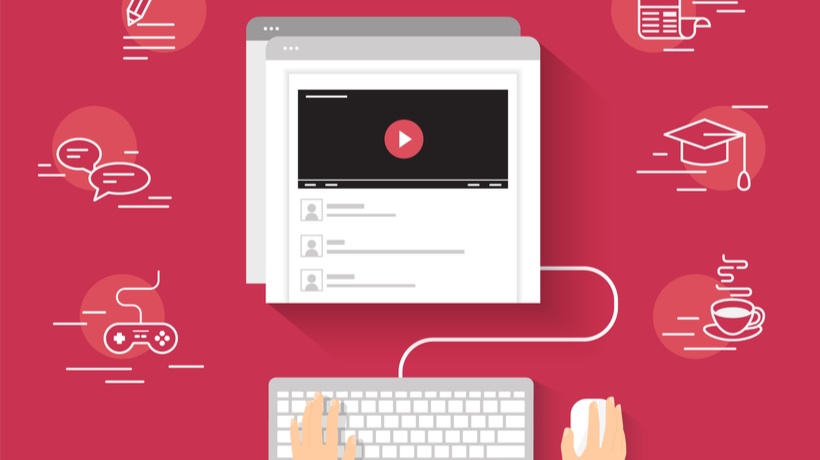How To Produce High Quality eLearning Videos
One of the most significant benefits of using eLearning videos is that they cater to a wide variety of learning needs. Not to mention that it can be used to convey virtually any type of subject matter, as they transfer knowledge in an appealing and engaging way, they can reduce eLearning seat time and they can be really fun. However, in order to provide your learners with all of the advantages eLearning videos can offer, a few key elements need to be in place. Video production can be a quite costly and time consuming process, but including your own eLearning videos in your eLearning courses may certainly worth the effort. In this article, I'll share everything you need to know from planning to delivery, so that you can successfully create eLearning videos that enhance the eLearning experience of your audience.
eLearning Video Production: 7 Tips For The Preparation Stage
Planning is fundamental before even starting your eLearning video production; the better prepared you are, the easier and less complicated the production process will be. The most critical step at this stage is, of course, to write your eLearning video script. However, there are a lot of other elements you should take into consideration before this. Here are some things to consider if you wonder how to start:
- Outline the content to be included in the eLearning video.
Begin by making a detailed outline of what the eLearning video should include, all the visual elements that are absolutely necessary in order to convey your message, as well as the activities to be included in your eLearning video. This will give you a general idea about how big your project is and, therefore, how much time, effort and resources you may need to devote. Then, you can draw conclusions if it worth it, or you may decide to develop some of the material that was supposed to be included in the eLearning video using alternative ways. - Match your video to the eLearning content.
One of the most challenging aspects of integrating a video into your eLearning course is to figure out how it can most effectively serve the end learning objectives or goals. At which specific point of the eLearning course do you plan to incorporate it? Which specific objectives does it cover? While an entertaining video will draw learners in and grab their attention, it won’t offer them real value unless it is a cohesive piece of the eLearning puzzle. Before developing your eLearning video, figure out how you can seamlessly integrate it into the content of your eLearning course in order to increase learners' engagement and knowledge absorption. For example, you can create an eLearning video that serves as an introduction to the module, or one that summarizes everything that the learners need to know from the lesson. eLearning videos should never be an afterthought, but carefully placed eLearning tools that help your learners master the learning objectives. - Plan for "pauses" in order to make your eLearning video interactive.
In order to not lose your audience’s attention while they’re watching your eLearning video, make sure that the video itself requires their participation. Consider creating pauses that allow your learners to reflect on the topic, or including interactive questions on the points you want to emphasize. Another idea is to design a branching scenario–based eLearning video, where your audience will be required to make choices and follow alternative paths; this also creates a suspenseful atmosphere, which can be particularly engaging.Design the Best Video-Based Learning Experience for your Learners with the Most Engaging Branching Scenarios!Discover, choose and compare the top eLearning Authoring Tools with Branching Scenarios Functionality! - Write script for narrations and voice overs.
Once you have checked your eLearning video production outline for all the aspects mentioned above, you can start writing your eLearning video script. Use language that is natural for your eLearning video script or storyboard, and test it by reading it aloud to make sure that it flows and doesn’t sound too forced. In addition, utilize minimal industry-specific jargon, unless you know that your audience has prior knowledge on the topic or is more experienced in the industry. Also, consider writing extra scripts to accompany your audio instructions, if you have any. Always keep in mind that your eLearning video material must be appropriate, engaging, interactive and in accordance with your eLearning objectives. - Check script for redundancy and repetitions.
If you are going to be including an audio narration in your eLearning video, there is no need to include text everywhere on screen. Instead, create text for key ideas or concepts that need to be emphasized or include visuals or tables that will help learners to better comprehend the subject matter, and write a good script to explain them further. eLearning videos should never be repetitive in terms of the information presented. While including recaps and reviews at the end of each lesson is always wise, you should keep redundancies to a minimum and only highlight the key takeaways of the eLearning course. - Gather your equipment.
Make sure that you have the correct equipment. It doesn’t have to be fancy, but it needs to be of high-quality. Gather your eLearning video tools and equipment. Regardless of the brand and model you choose, you need to make sure that your camera records high-definition (HD) video. Examples of other types of equipment you may need are: a) a tripod, as you don’t want your eLearning video to be shaky; b) a microphone: prefer using a tie or collar clip mic; c) lights: desk lamps, floor lamps, or both, as long as your lighting is adequate, and d) software to be used for video and audio editing; luckily, there are several free audio tools out there you can use. - Hire professional actors.
For role playing scenarios, avoid using your employees or, worse, your friends. It is fun to see a familiar face on the screen, but a professional actor will save you editing time and ensure a more professional end product.
eLearning Video Production: 3 Tips For The Recording Stage
Now that you have made your planning and have prepared your eLearning video material, it is time to put them together and start recording. Ready, set, action!
- Film, record, and sound check multiple times.
Film and record your material several times, in order to make the editing process later on easier. If you can’t afford a teleprompter for the acting or your voice overs, use flip cards or a large whiteboard with your script written on it. - Pay attention to details.
Watch closely and make sure that every single aspect is perfect, so that your audience won’t be distracted by irrelevant details. Is your presenter always looking in the right direction? Are lights and shadows ok? Does the presenter look professional? What about stray hairs that get in the way? - Be creative and plan ahead.
Keep your audience interested by trying new things. Use different camera angles, and consider how relevant movie clips, music, graphics, or animations are going to be integrated later on, during the editing stage, with each one of your shots. Plan ahead as it usually turns too costly not to foresee what you will need later on. Most of the times you will not afford to repeat the entire process.
eLearning Video Post-Production: 5 Tips For The Editing Stage
The hard part is over and now it’s editing time. Luckily, there are countless ways out there to edit your video. Always remember that less is more. It might be hard to leave some parts of your filming and recording behind, but remember that your goal is to keep your audience engaged, and the shorter, the better. To complete the process and polish your eLearning video, consider the following steps for the last stage of your eLearning video production.
- Pair narratives with visual elements.
Use any audio tool to create any additional audio narrative for any graphics, tables, or images that you’re going to include in your eLearning video. By doing this, you appeal to learners and improve their ability to absorb the subject matter. When recording your audio, use high quality recording equipment that offers clear sound with minimal distortion or white noise, and use software, such as Audacity, to improve it even further and add in effects. - Keep your eLearning video short.
Shorter videos keep your audience engaged; make sure that your eLearning video is short and to the point. If you want to include a long lecture, consider creating a series by breaking its content up into a few bite-sized videos, or episodes, each one of which will be focused on a single idea or concept. Bite-sized videos boost knowledge retention. If you are working with subject matter that may be more complicated or require a great deal of explanation, you may want to break the eLearning video content into shorter videos to avoid cognitive overload. Bear in mind that your audience is probably going to be either distracted or pressed for time, and sitting through an hour long eLearning video may not really be an option for them. Ideally, your eLearning videos should not exceed 2-3 minutes. Then, you may give your learners a brief recap of the section to improve their knowledge retention, an activity based on the information they have just watched to keep them engaged, and then move onto the next eLearning video. Such an approach will facilitate the learning process by giving them a better understanding of the eLearning material, as well as opportunities for practice. Think about this while editing your eLearning videos. - Integrate background music and visual effects to your eLearning video to make it immersive.
There is a variety of software programs which feature tools and templates that you can use, as well as royalty free music sites where you can find a wide range of sounds and ambient tracks. It’s important to note, however, that any music or visual effects should not distract the learner from the eLearning content itself, and should seamlessly blend into the background of the video. - Ensure that your eLearning video is accessible.
Accessibility is a critical factor for creating a successful eLearning video. Make sure that your video can be viewed on all devices, computers, mobile phones, and tablets, and accommodate your audience members that have hearing difficulties by making your video closed captioned. This way you will ensure that your eLearning video can be viewed anywhere, anytime, and by anyone. - Compress your eLearning video files.
Last, but certainly not least, compress your eLearning video files and even consider creating a lower quality version, as some of your learners may have slower internet connections. After all, you neither want to frustrate your learners nor to deny them the chance to enjoy your eLearning video to the fullest.
Adding eLearning videos to your eLearning courses can boost learners' engagement and help you to create a memorable and exciting eLearning experience for your audience. Use these tips to get the most out of your eLearning videos, so that they add real value to your eLearning courses.
Looking for additional ways to create meaningful eLearning experiences? Read the article How To Create A Meaningful eLearning Experience: 6 Tips For eLearning Professionals where I share 6 effective tips to create meaningful eLearning experiences that will make your audience to fully engage in your eLearning courses and get the best out of it.









